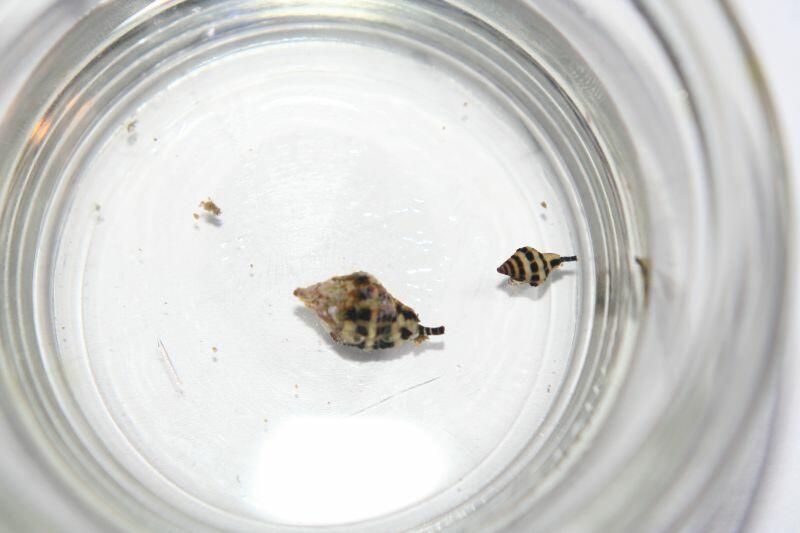Mõtlesin, et teen eraldi teema nende tigude kohta, sest tegemist on üsna haruldaste isenditega akvaariumis.
Nimelt on paaril kasutajal ReefCentralis veel sarnaseid tigusid ja tuntakse huvi nende toitumisharjumuste kohta.
Teada on, et vetikaid nad ei söö, sest neil puudub selleks sobilik seedimisorgan. Dr Shimek arvab, et nad on röövloomad toitudes ilmselt väikestest ussidest ja vähilistest.
Paljunemisest pole seal veel mingit infi, nii et ma võin selle koha pealt võib-olla esimene olla.
kloun kirjutas:
Sain Reef Central'ist teada, mis tigudega tegu

:
Quote:
It's an Engina species, although there is still some disagreement about it's proper name. It's had several names in the past, and has been considered to be a form of Engina alveolata, but others believe it deserves its own name, Engina histrio, and isn't a form of that species. They are found in the same areas without intergrading, and E. alveolata are about twice as large and have orange and black markings instead of yellow and black ones. Your choice:
http://www.conchology.be/en/cyberconcho ... 2=Engina#fYou could easily have gotten a piece of live rock with ten (or fifty) juveniles of this species, as they are often clustered in the holes and cracks. They may have just grown up and become more visible.
Cheers,
Don
Unquote
Akvaariumis pidamise kohta pole netis mitte mingisugust infi

kloun kirjutas:
kloun kirjutas:
Sellised on need tundmatud teod lähivõttes:


Olen märganud vähemalt 2-e sellist uut pisikest tigu, nii umbes 4mm. Vaevalt, et need 2 on koos kividega tulnud ja siiamaani oma kasvult teistega võrreldes kängu jäänud, rohkem kaldun ikka arvama, et nad on mu akvas sündinud

. Way to go, selliste tigude paljunemine pole ilmselt tavaline

kloun kirjutas:
siin üks väikestest tigudest koos täiskasvanuga


Re: Engina species
quote:
--------------------------------------------------------------------------------
tirkin wrote on 09/09/2007 07:25 AM:
Hello Brian,
I have found these snails mostly on live rock, close to coral base and sometimes on sand. I don't have any problem algae, although there does appear some diatom film on the glass and probably some on the live rock also. So I think they could be eating diatoms in my tank
Rgds,
Andres
--------------------------------------------------------------------------------
Andres,
Thanks for the reply, but we have since found out that this Genus of snail is strictly predatory, so it would not eat diatoms (it doesn't have the stomach that can digest them). Dr Shimek believes the most likely food source would be small worms or crustaceans, but no one really knows about these guys.
Brian
__________________
Currently redesigning my 90 gallon tank system to support coral and invertebrate breeding. Click on my red house to see the thread with the progress.
_________________
http://www.sealife.ee - Akvaariumikaupade E-pood: